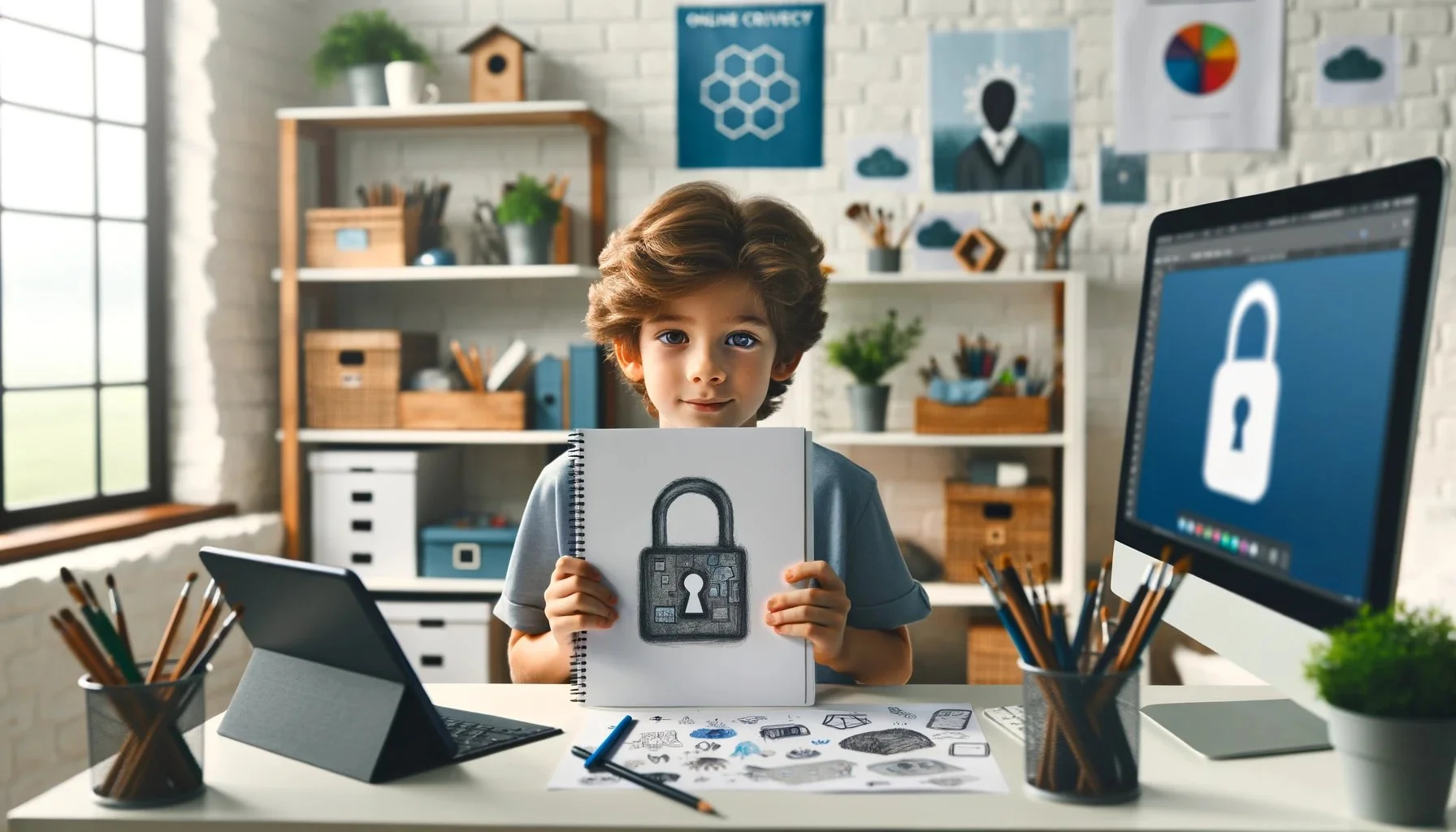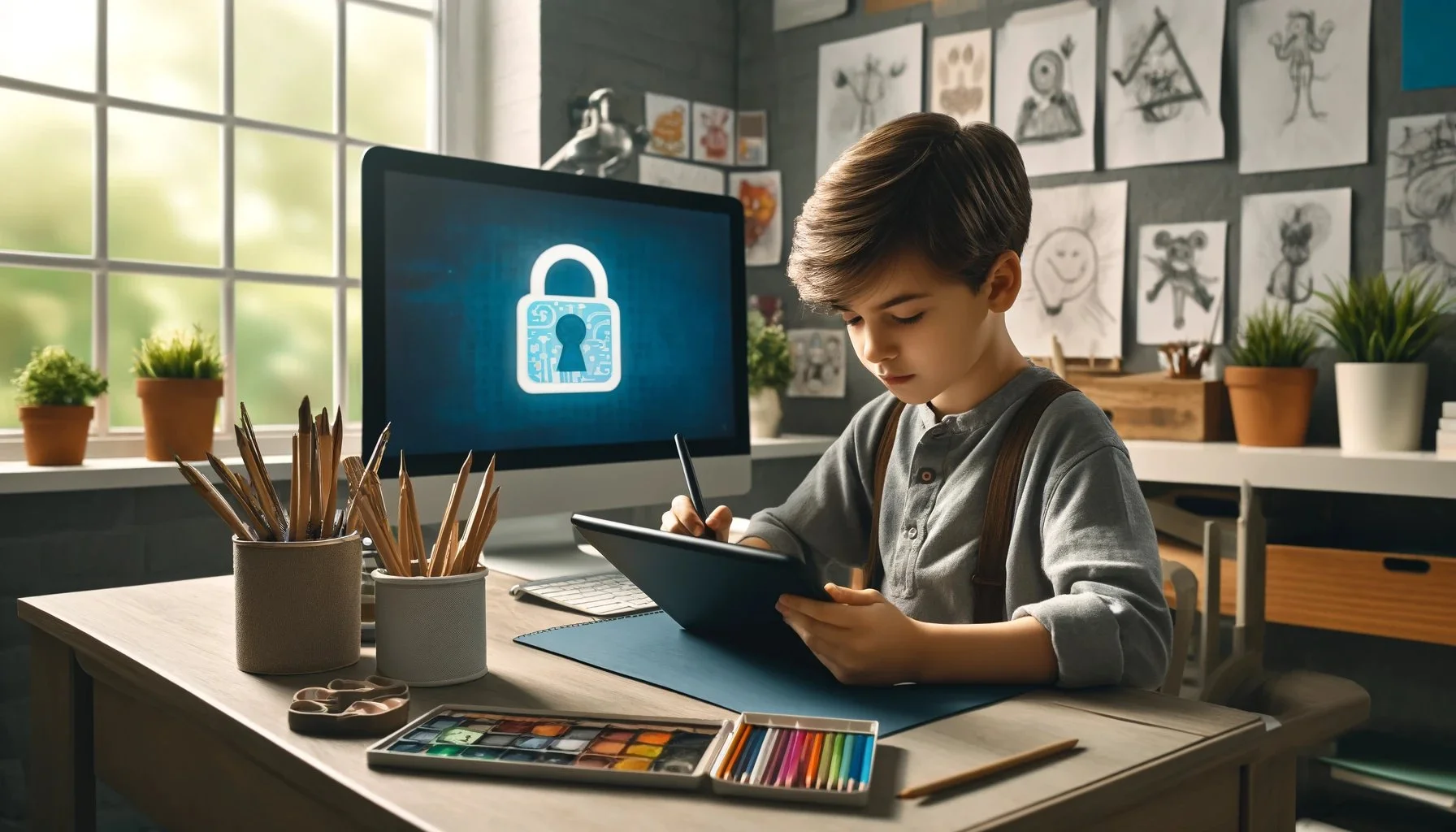
The internet is a boon for young artists: they show off their skills to a global audience. But it comes with a drawback, such as the risk of their work being copied or stolen. This means they need to be careful about what they share online and take measures to protect their data and art from potential harm.
In this blog, we’ll look at some of the best ways to protect your online privacy and keep your art safe.
The Importance of Protecting Your Art and Personal Information:
Inexperience makes young artists vulnerable to a range of cyber dangers. Risks associated with sharing artwork or personal information online include:
- Identity theft: Giving up personal information makes it more likely that someone would use it fraudulently or for identity theft.
- Online harassment: Trolls and bullies may send artists threatening or abusive messages.
- Copyright infringement: If an artist’s work is used without permission, there may be legal ramifications.
- Reputational damage: Artists who post offensive content risk having their reputation damaged, which might limit their access to future opportunities.
Recommended Reading: Low-Code vs. No-Code: A Guide for Young Entrepreneurs in 2024
How to Maintain Online Privacy and Protect Art?
The following information will update you on how to protect your art:
1. Register Copyrights for Multiple Works:
The United States Copyright protects visual art such as pictures, paintings, sculptures, and jewelry. According to the law, copyright protects an artist’s work from the moment it is conceived.
While registration is not essential for copyright protection, the copyright office encourages you to register.
You can register several unpublished works as a collection for a single cost.
2. Certificate of Authenticity:
Every artist ought to know the significance of a Certificate of Authenticity (COA). This document contains all the important information about your artwork, including its creation date, measurements, media, and the artist’s name and signature. Artists are entitled to issue certificates of authenticity to guarantee the originality of their work. A certificate of authenticity (COA) is included in the artwork.
Who has the authority to issue a COA?
All the following:
- An artist is the primary issuer.
- An art gallery representing the artist.
- An art dealer representing the artist.
- Expert artwork authenticators and art institutions.
3. Creating Your Digital Footprint:
Everything you do online creates a digital footprint that is influenced by all the posts, comments, and interactions you have. So, publish your work with your logo and signature. You can use a watermark as well.
4. Artwork Archive:
You can use this facility to secure your creation. Artwork Archive provides backup for artist’s inventories. You can also preserve your Certificate of Authority in the Artwork Archive and keep track of each of your project’s timelines using the record-keeping feature.

Below are some additional tips for aspiring artists:
Besides the tips listed above, take into account the following:
- Select platforms that are consistent with your privacy values.
- When working with other artists, clarify ownership and privacy issues.
- Upgrade your software and use VPNs to increase security.
- Learn about internet safety so that you can adequately safeguard your digital identity.
Recommended reading: Level up with Python Tools for Kids
Conclusion:
Up-and-coming artists need to know how to protect their digital artwork and personal information. So, no matter how busy you are, never skip vital procedures like watermarking, copyrighting, sharing with caution, and maintaining privacy settings.
Moonpreneur is on a mission to disrupt traditional education and future-proof the next generation with holistic learning solutions. Its Innovator Program is building tomorrow’s workforce by training students in AI/ML, Robotics, Coding, IoT, and Apps, enabling entrepreneurship through experiential learning.
























